Discover 11 hidden attractions, cool sights, and unusual things to do in Salisbury (United States). Don't miss out on these must-see attractions: Hurley Park, Mount Zion Baptist Church, and Grimes Mill. Also, be sure to include Salisbury National Cemetery in your itinerary.
Below, you can find the list of the most amazing places you should visit in Salisbury (North Carolina).
Table of Contents
Hurley Park
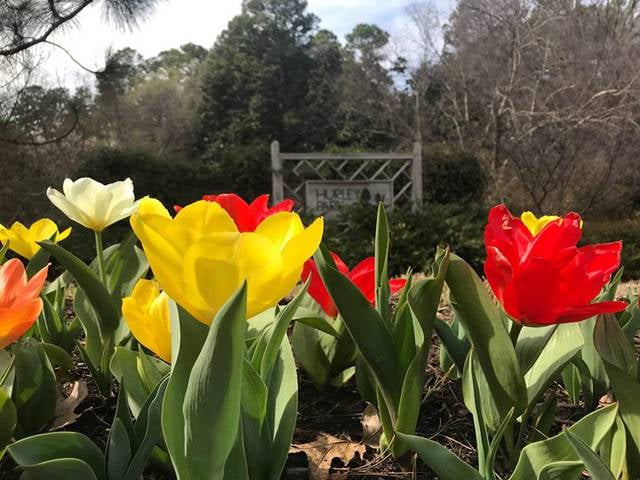
Park, Relax in park
Address: 302 W Franklin St, Salisbury
Mount Zion Baptist Church
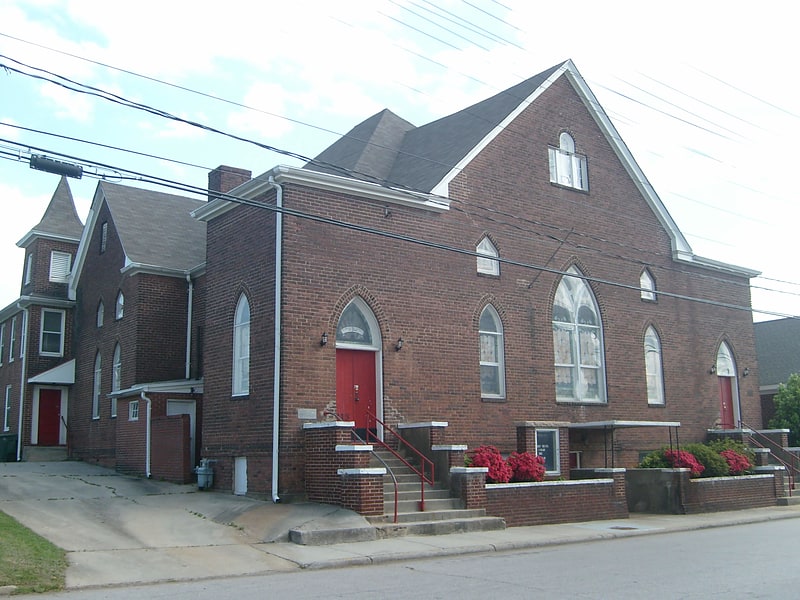
Church in Salisbury, North Carolina. Mount Zion Baptist Church is a historic African-American Baptist church located at 413 N. Church Street in Salisbury, Rowan County, North Carolina. The sanctuary was built in 1907, and is a red brick Gothic Revival style building. It features stained glass lancet windows and small triangular shaped windows and former towers capped by octagonal conical roofs. A brick-veneered educational/manse wing added between 1913 and 1920.
It was listed on the National Register of Historic Places in 1985.[1]
Address: 306 N Church St, Salisbury
Grimes Mill

Flour mill in Salisbury, North Carolina. Grimes Mill was located at 600 N. Church St. in Salisbury, North Carolina. It was built in 1896 as a flour and feed mill. It stayed active until 1982. The Historic Salisbury Foundation bought it that year and later turned it into a museum. It was listed on the National Register of Historic Places and was the only roller mill museum in North Carolina. The site was destroyed by fire on January 16, 2013.[2]
Salisbury National Cemetery

Cemetery. Salisbury National Cemetery is a United States National Cemetery located in the city of Salisbury, in Rowan County, North Carolina. It was established at the site of burials of Union soldiers who died during the American Civil War while held at a Confederate prisoner of war camp at the site.
Now administered by the United States Department of Veterans Affairs, it encompasses 65 acres (26 ha), 15 acres (6.1 ha) in the original location and 50 acres (20 ha) at an annex. More than 30 acres were added to the annex in 2020 as a result of a donation by the YMCA.
As of 2012 the cemetery had 6500 interments (in 6000 standard graves, many of which also hold a spouse), plus an estimated 3,800 in 18 mass graves at the original location. There are 5000 interments, in 4500 graves, in the new location. As of 2020 a total of 26,000 veterans and family members were buried in both locations.[3]
Community Building
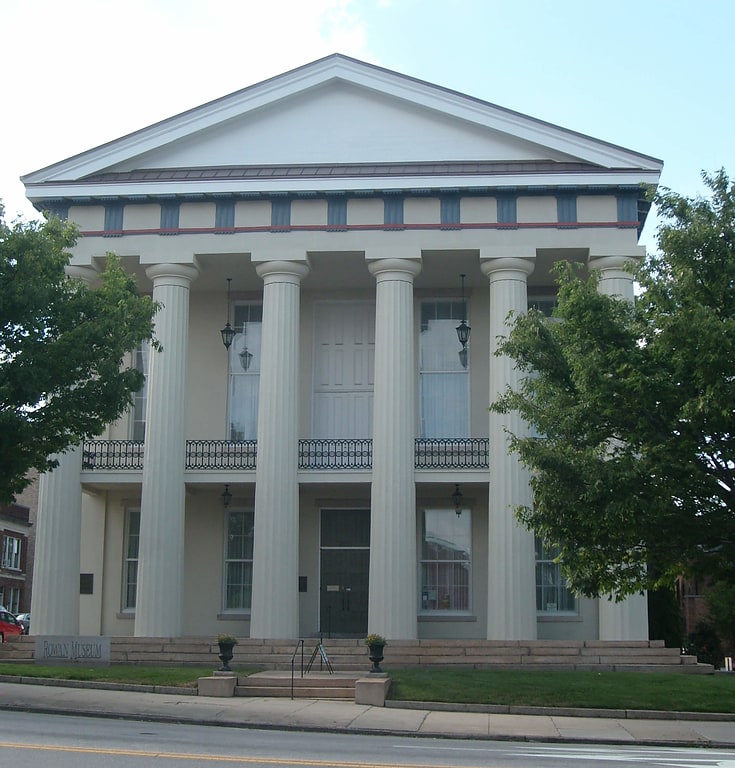
Museum in Salisbury, North Carolina. The Community Building, originally built as the Rowan County Courthouse, is a historic building located at Salisbury, Rowan County, North Carolina. It was built between 1854 and 1857, and is a two-story, Classical Revival, stuccoed brick building on a granite foundation. It measures 50 feet wide and 85 feet long and features a pedimented portico supported by six Doric order columns. The portico includes a cast iron balcony and the building is distinguished by tall windows. A new Rowan County Courthouse was built in 1914, and the building used as a community center. The building is operated by the Rowan Museum.
It was listed on the National Register of Historic Places in 1970. It is located in the Salisbury Historic District.[4]
Oak Grove-Freedman's Cemetery
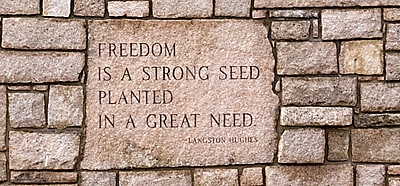
Cemetery in Salisbury, North Carolina. The Oak Grove-Freedman's Cemetery is a historic cemetery located at the corner of Liberty Street and North Church Street in downtown Salisbury, North Carolina. The cemetery has served as a burial ground for African Americans since it was deeded to the city in 1770. More than one hundred fifty known and unknown African Americans, both enslaved and free, are buried at the cemetery.
The Freedman cemetery is part of a larger cemetery parcel known now as the Old English Cemetery, which is home to the graves of soldiers who died in the Battle of Camden in 1780 and to British soldiers who died in Salisbury during Cornwallis' occupation of the city. The two cemeteries were not separated physically until 1842 when a wooden fence was erected around the Old English Cemetery per the will of William Gay. This fence effectively separated the burial sites of African Americans and whites for the first time. In 1855, the fence was replaced with a granite wall, which remains standing today. Between 1903-1940, portions of the Freedman's Cemetery have been violated causing bodies to disintegrate and markers to be removed. The last standing markers were noted in 1940. The City of Salisbury assumed ownership of the cemetery in 1975, at which time the cemetery was closed to future burials.
In 1998 the Waterworks Visual Arts Center, under the support of the National Endowment for the Arts and other local organizations, embarked on an eight-year effort to restore parts of the cemetery and erect a public art memorial to honor the historic site. Artist Maggie Smith and landscape architect Sam Reynolds were hired to design and create the memorial which was dedicated on Martin Luther King, Jr. Day, January 16, 2006. Maggie Smith said of the project that, "the restoration and memorialization of the Oak Grove-Freedman's Cemetery has one primary goal: to symbolically and literally bring the desecrated part of the cemetery back into the community's embrace."[5]
Fulton–Mock–Blackmer House
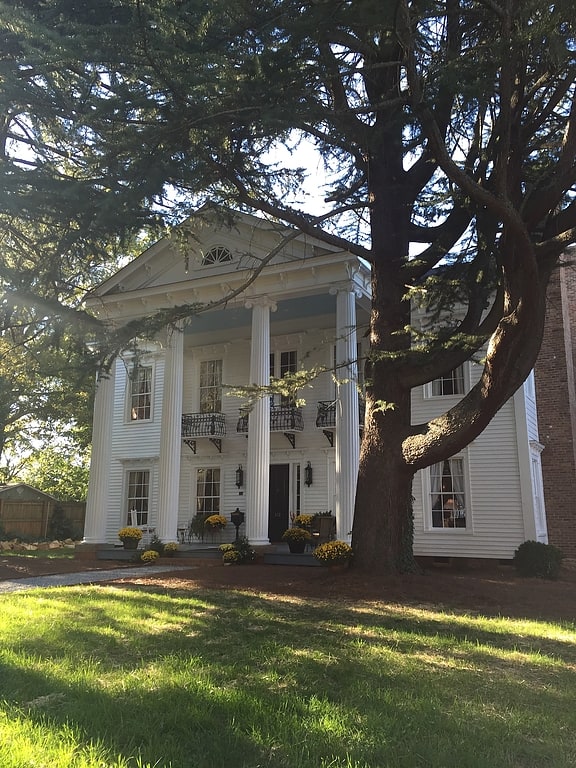
The Fulton–Mock–Blackmer House is a historic home built in 1820 in Salisbury, North Carolina, USA, whose most famous resident was the actor Sidney Blackmer. It was severely damaged in a 1984 fire, then left largely neglected for nearly three decades. A full restoration was completed in 2015. It is located in the West Square Historic District, created by the city in 1975, and is a contributing structure to the Salisbury Historic District.
John Fulton, for whom Fulton Street was named, built the Federalist style house in Salisbury in 1820. An ad in the January 1, 1821 Western Carolinian said, "The subscriber is now finishing a large and commodious house in this place, on the western side of the town, situated between the Male and Female Academies, which he intends as a boarding-house for young ladies." Fulton died in 1827 and his stepson Maxwell Chambers inherited the property. President Andrew Jackson appointed Fulton's nephew William S. Fulton governor of Arkansas. Girls who attended Salisbury Academy lived in the house, and later the house became a school. Davidson College owned the house at one time. The A.J. Mock family owned the house and added Italianate brackets above the front windows. They also replaced original Federal style windows, of which one remained.
Actor Sidney Blackmer bought the house in 1931 and the family lived there. Blackmer planted cedar trees, a holly tree and a cucumber magnolia. The 5000-square-foot house at Fulton and Innes Streets sat vacant after a December 1, 1984 fire, after which Suzanne Blackmer could not afford a restoration. Four ionic columns added between 1906 and 1908 were stored, though a base of one was left as a guide for a possible restoration. Contractor Al Wilson also fixed the roof and foundation in 1989, actions credited with keeping the house from falling down during years of neglect. In 2008, Jonathan Blackmer, son of Sidney and Suzanne, asked that the house either be torn down or restored for "any public use", such as a museum devoted to his father's career. In June 2012, Historic Salisbury Foundation, which had done some work on the house over the years, agreed to buy it, paying $109,611 to Jonathan Blackmer. Renovation was under way, and in April 2013, the public was allowed inside the house for the first time in 28 years. Architect Joseph K. Oppermann pointed out its "Federal-style windows and shutters, false wood graining on doors and early wallpaper." Blue wallpaper with the photo of Commodore Stephen Decatur was found in the front parlor. Brian Davis, Historic Salisbury Foundation executive director, said the roof would be raised to where it was originally, restoring a full attic. Materials from the historic Grimes Mill, which burned in 2013, were to be used in the house.
In February 2014, the Dixons bought the house from the Historic Salisbury Foundation for $150,000. Historic preservation tax credits helped the Dixons with the restoration, which was completed in early 2015. The Fulton–Mock–Blackmer House won a 2015 historic preservation award from Historic Salisbury Foundation, in the category Private Preservation & Neighborhood Revitalization. The chimneys were replaced, but their old bricks were used as a facade. Otherwise, the couple planned to keep as much of the house's history as possible. The restored 20-foot columns were returned July 14 but still needed capitals.
Old photos and Jonathan Blackmer's memories helped determine what needed to be done. As much as possible, each section of the house would look as it had at some point in its history. Interior doors dating to 1820 are still in use.[6]
Sacred Heart Catholic Church
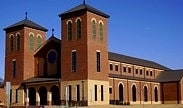
Catholic church in Rowan County, North Carolina. Sacred Heart Catholic Church is a Roman Catholic church on Lumen Christi Lane in Salisbury, North Carolina, United States. The building cost $9.4 million, has 12,083 square feet and measures 60 by 170 feet, seating 760, on 107 acres of land. The church held a dedication mass on December 19, 2009. Sacred Heart has about 1000 registered families.[7]
Shober Bridge
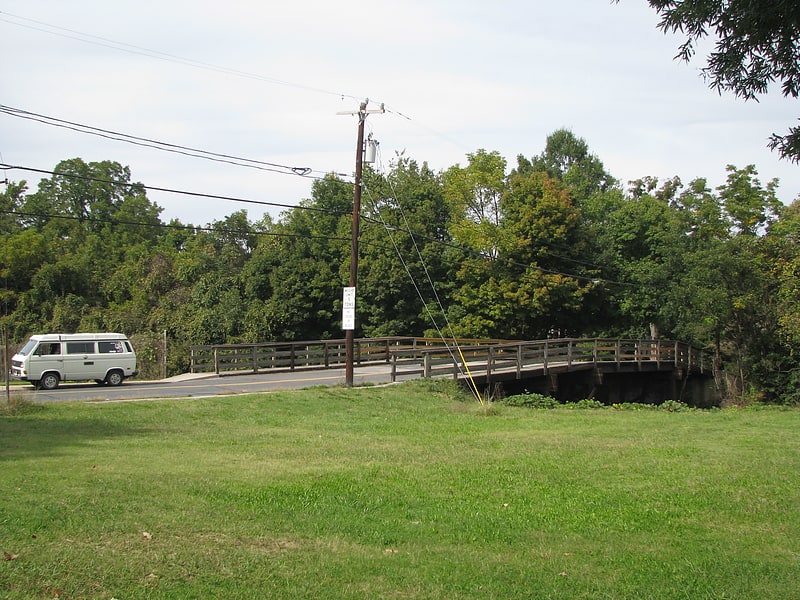
Humpback bridge in Salisbury, North Carolina. Shober Bridge is a historic humpback bridge carrying Ellis Street across the Norfolk Southern Railway in Salisbury, North Carolina, one of two timber bridges in the city. It has asphalt on top of a wooden deck and has needed replacement for many years. Currently, the Shober Bridge has a six-ton weight limit, meaning large trucks and emergency vehicles cannot use it. Historic Salisbury Foundation calls it "a contributing structure to the Ellis Street Graded School Historic District and.. a gateway entrance to Salisbury proper." It was named for Col. Francis Shober, who represented Salisbury in the United States Congress in the late 1860s. In 1999, the Shober Bridge was named to the National Register of Historic Places as part of the Ellis Street Graded School Historic District.[8]
Hambley–Wallace House

Historical landmark in Salisbury, North Carolina. Hambley–Wallace House, also known as the Wallace House, is a historic home located at Salisbury, Rowan County, North Carolina. It was designed by architect Charles Christian Hook and built between 1901 and 1903 by the Lazenby Brothers, for British mining engineer Egbert Hambley and his family. It is a large 2+1⁄2-story, granite and brick, Châteauesque style mansion with a tall hipped slate roof. It features an offset, conical-roof tower, two-story projecting bay, and wraparound arcaded porch. Other contributing resources are the playhouse, a stable / servant's quarters, and the landscaped grounds. Historian Davyd Foard Hood said the decision to use Châteauesque architecture was the result of the recent completion of Biltmore House. Thomas Meehan & Sons of Philadelphia did additional work on the property in 1904.
It was listed on the National Register of Historic Places in 1997. It is located in the Salisbury Historic District.
Lottie Hambley sold the house to John David and Mary Napoleon Norwood in 1917. The Norwoods eventually had financial problems and, although Mary Norwood was able to buy the house at auction in 1923, she defaulted on the mortgage. Leo Wallace Jr. and Virginia Wallace bought the house for $55,500 at auction in 1927. Members of the Wallace family have lived in the house since then. Leo and Virginia Wallace lived in the house for 70 years. Virginia Wallace loved roses, and it happened that the original deed required that a rose garden would always be included on the property. Leo's son Lee and his wife Mona Lisa Wallace bought the house in 2011 and restored it.[9]
John Steele House
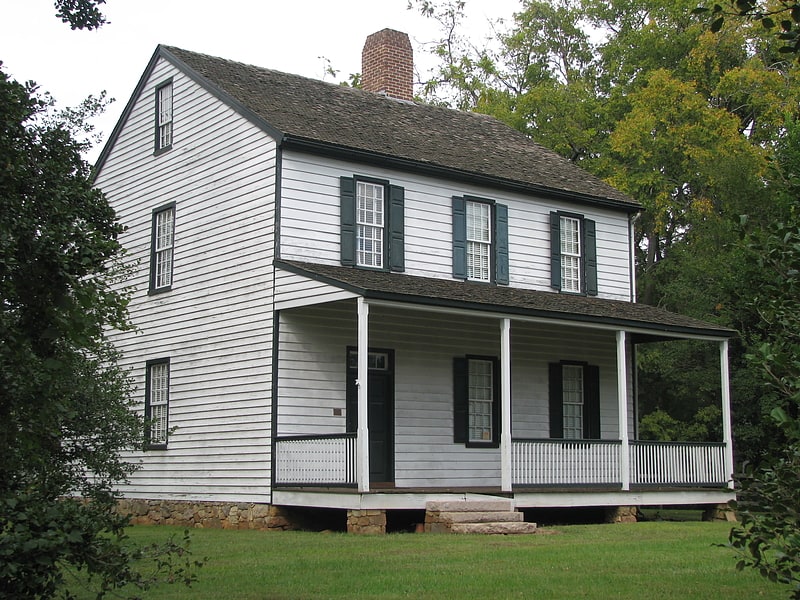
John Steele House, also known as Lombardy, is a historic plantation house located at Salisbury, Rowan County, North Carolina. It was built between 1799 and 1801, and is a two-story, three bay, side hall plan, Federal style frame dwelling. It has a side gable roof, one-story shed roof porch, and is sheathed with beaded weatherboards. The house was restored between 1977 and 1983. It was the home of North Carolina politician John Steele.
It was listed on the National Register of Historic Places in 1994.[10]